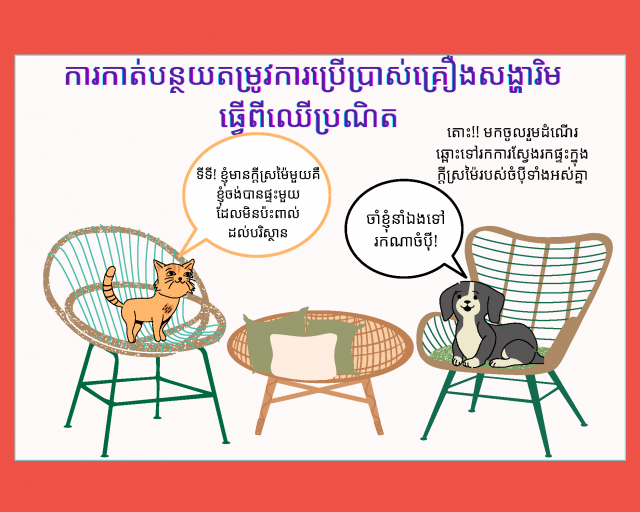Strengthening Angkor Wat’s Tower, from an Engineering Perspective
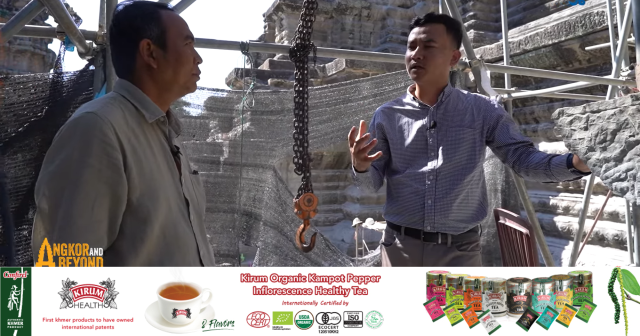
- By Sem Vanna
- April 16, 2024 9:00 AM
SIEM REAP — Restoring historical monuments are projects that require a great deal of research by experts in several fields, people with specialized knowledge and skills, financial support and a lot of patience.
At the famed 12th century temple of Angkor Wat, the Bakan tower has been meticulously restored over the last few years by teams from the APSARA National Authority—the Cambodian government agency managing the Angkor Archeological Park—and international experts.
_1713014399.png)
The substructure of the Bakan Tower rises 30 meters to support the five towers that give the temple its signature outline. With its height, tight spaces and the fact that it is part of the most recognizable tourism destinations in Cambodia, restoration of the Bakan tower has proven challenging work as Hem Mony, an engineer with the APSARA Authority, recently explained.
_1713014458.png)
Caption: Hem Mony, an engineer with the APSARA Authority. Photo: Soy Ratanakvisal
Sem Vanna: In view of its size and complex structure, how many restoration projects have been conducted at the Bakan tower over the last few years? And how does your team approach such a challenge?
Hem Mony: Up until this point, there have been three restoration phases conducted on the Bakan, the third phase currently taking place. The fourth one will start later this year with the support of KOICA (Korea International Cooperation Agency) and should continue until 2027. During these three phases, we have worked on the northwestern, the southwestern and the southeastern sections.
Our main goal is to stabilize the unsteady laterite stones and sandstones that have come out over the years as a result of lack of maintenance. Due to war and conflicts in past decades and other circumstances, many stones of the Bakan were damaged or have simply gone missing.
_1713014707.png)
Putting the structure back together is the way to do it, but it is by no means an easy way. Plus, we cannot just disassemble the entire structure and reassemble it again. This would only make things worse as we would be dislocating many of the intricate locking mechanisms of the stones. That is why we need to adapt and use different scenarios such as sometimes working from the bottom back to the top, which may seem counterintuitive.
One damaged part…used to be temporarily supported by wooden beams. Now, we have reincorporated the old stones and applied mortar to finish the work.
When stones have been damaged for an extended period of time, it exposes the inner compact soil to the outside elements, enabling vegetation to grow and insects to build nests. That is why we have our dedicated team to help reduce the growth of vegetation on the temple.
_1713014762.png)
The base of the Bakan tower is a crucial structure that helps support the enormous weight of the five towers above. Its 12 staircases with extreme inclination were actually built to primarily support the Bakan. They were shaped into staircases possibly for aesthetic reasons only.
If we don’t figure out how to stabilize the weak points in the structure quickly enough, the direction of force will start to race toward the weak points, making our work harder in the future.
For the laterite stones that stay inside the structure, a specific amount of moisture is needed to retain its structural integrity. It takes time for the different layers of stone to properly bind together tightly. This is also to make sure that the Bakan is safe for the thousands of visitors to explore every day.
_1713014813.png)
Sem Vanna: I do notice some new stones being used during this restoration. What happened to the older stones of the temple?
Hem Mony: Based on the Angkor Charter, the introduction of new stones onto the restoration can only be made based on strict guidelines and due to urgent need. At some corners, visitors can spot missing parts on the leading edges of the structure. However, those missing parts were once only filled with ornamental stones, not structural stones.
We reserve the right to prioritize the replacement of the structural stones as they are more important to the stability of the monument, and to reduce the use of new stones as much as possible.
We cannot use cement to bind the stones. So, we have to chisel the stones to tight tolerances and make them clutch one another. Sometimes, we have to insert a piece of stone in the middle of a structure. This is difficult since perfecting an irregular dimension is time consuming.
_1713014860.png)
Therefore, we need to use specialized glue to work our way around cement. Specialized glue is not always cheap. In addition, it needs proper air circulation to settle properly. Therefore, we need to place the stones in a certain way to let enough air in to be in contact with the glue.
In the past, stonemasons used techniques that involved making specific protrusion to permanently lock the stones in place. To separate the stones, one needs to literally break the entire setup. This could be the reason why there was so much damage done here. The intention was perhaps to destroy the monument in past periods.
_1713014912.png)
At times, one piece of stone may weigh up to 1,000 kilograms. Getting the stones up here is all done by human power. At peak performance, we were able to bring up eight blocks of stones in one day with the help of 12 people.
The way we shape the new stones should not be the same as with the old stones. Doing it differently is to help distinguish between old and replacement stones. Since the new stones have a brighter and clearer look, we are allowed to use natural dye to color the new stones and mimic the color of the old stones.
_1713015076.png)
Our work needs to be evaluated and approved by both the national and international teams responsible for this heritage site in terms of both the restoration plans and budget allocation.
Decades ago, the Angkor Wat temple’s Bakan was restored by the French and later on by an Indian team. Looking at the photographs from the 1940s and 1960s, we can see vegetation growing all over the Bakan. Until today, some tree roots still remain inside the structure.
_1713015117.png)
The reality of the restoration does not always match our expectations. There will always be something new for us to solve. It may take us up to five months just to study and come up with a plan. Time is of the essence here. We need to work without [taking time off on] weekends in order to get the job done as soon as possible.
Detailed documentation is being compiled to be archived and ensure that restoration teams and stonemasons will find it easier to reverse engineer the structure for future restorations.
_1713015163.png)
About the Bakan
In addition to its enormous moat, its long galleries of bas-reliefs, the countless sculptures of apsaras and the fields of lush grass surrounding it, visitors coming to Angkor Wat may also want to see the Bakan, which is the third and highest level of the 900-year-old temple.
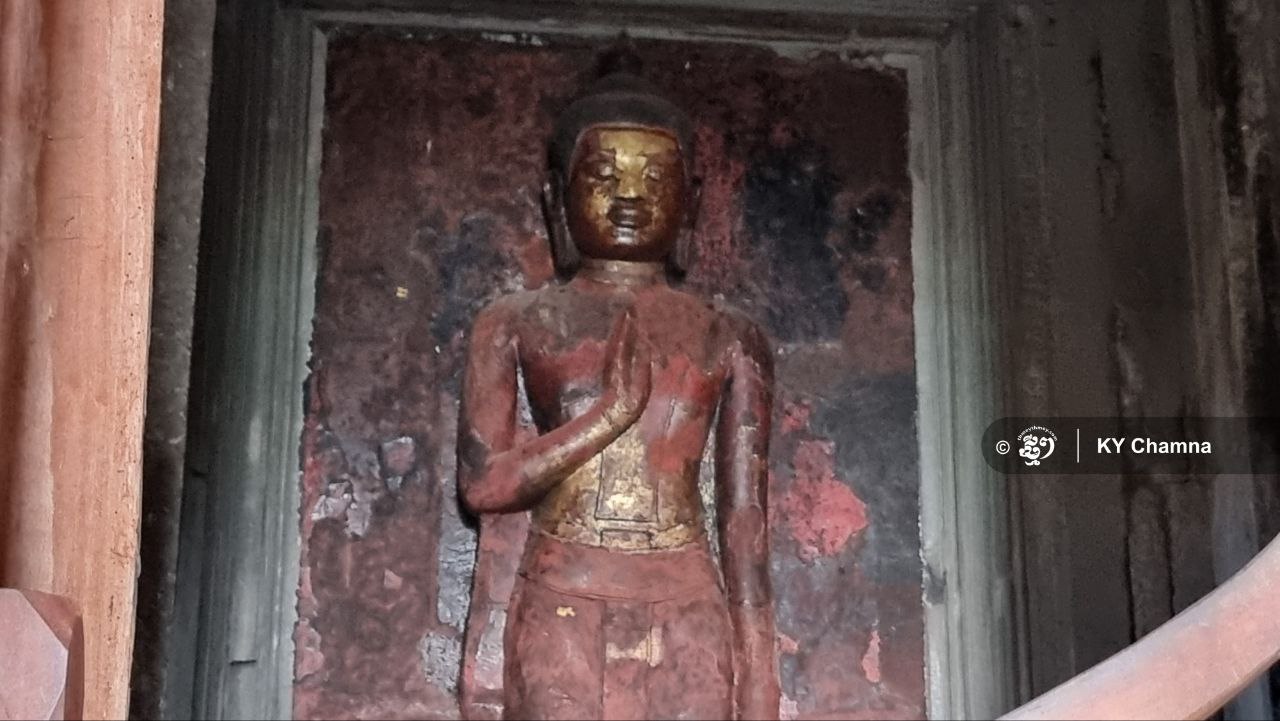
There, visitors can walk along the corridor and enjoy the panoramic view of the area as well as look at the sculptures of the Buddha at the central point and some vestiges of wooden structures.
When looking from certain windows, one can see the Phnom Bakheng temple that stands on a hill and even the Angkor Balloon—a helium tethered balloon offering bird’s eye view of the area.
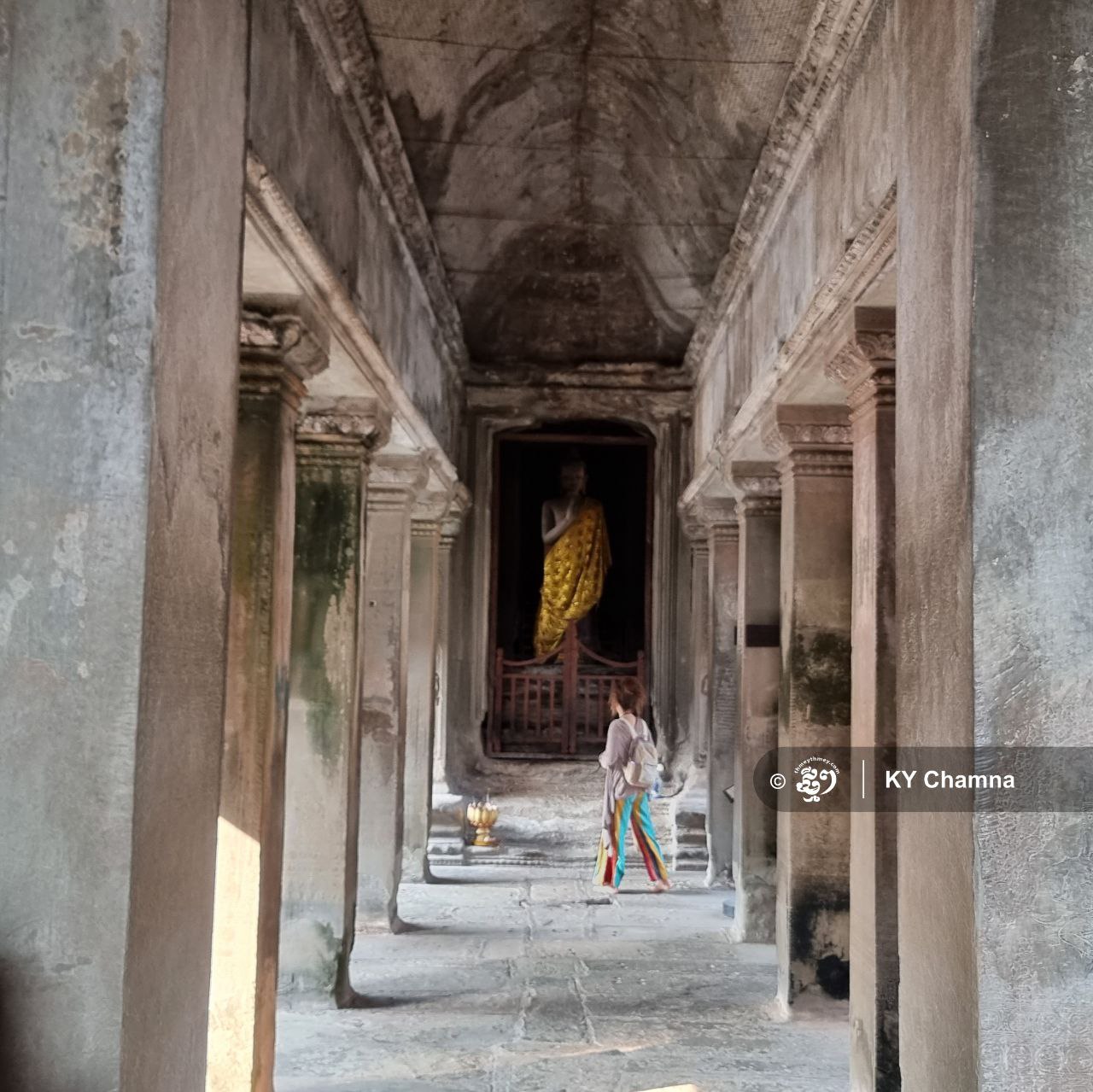
According to the information panel in Angkor Wat’s Bakan, the area was opened to the four cardinal points and probably featured a statue of Vishnu. Later on, when Angkor Wat became a location for Buddhist pilgrimages, the four entrances to its central sanctuary were filled with sandstone, and each of the newly constituted walls was then sculpted with a relief of the standing Buddha.
In the 20th-century, investigations inside the sanctuary revealed multiple statue and pedestal fragments, of which two pieces were of particular note: a statue of the Buddha seated on Naga, which is now displayed in the Bakan’s eastern gallery, and a rectangular stone object thought to have served as a sarcophagus. A number of such objects, in which the corpse would have been placed in a fetal position, have been found at other Angkorian temples.
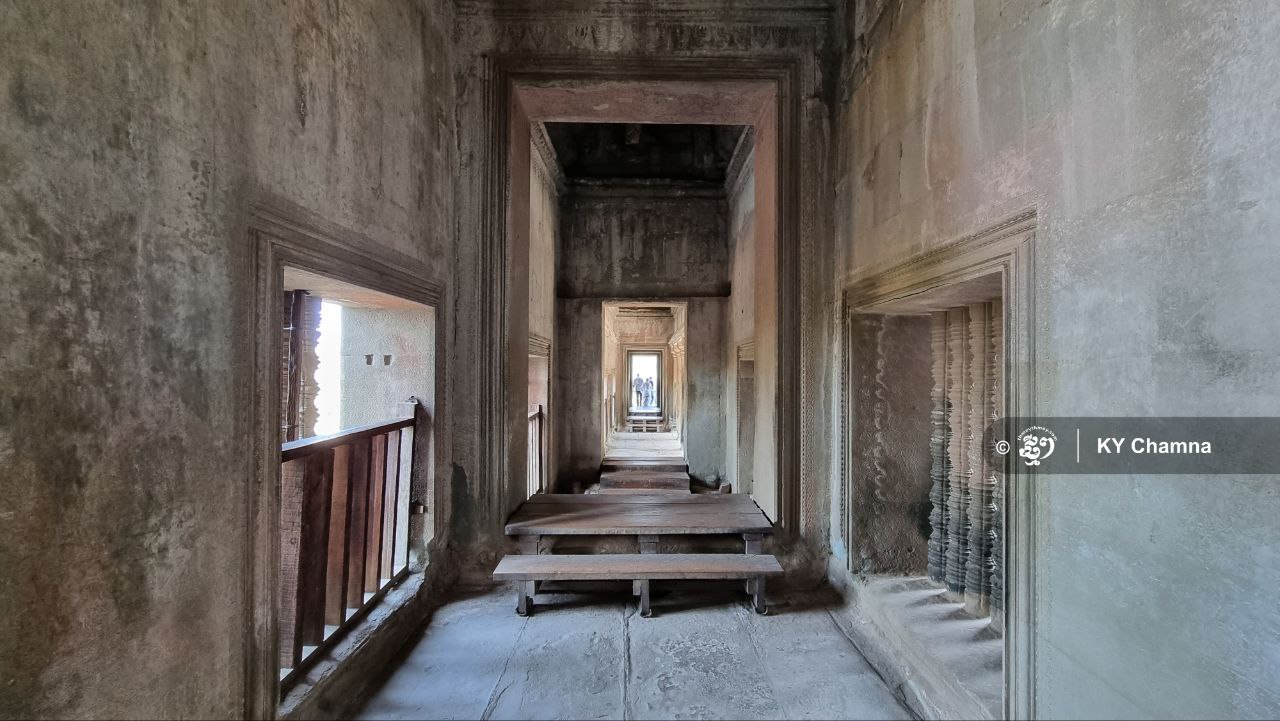
Conducted in Khmer for ThmeyThmey Digital Media, the interview was translated by Ky Chamna for Cambodianess News.
To watch the original Khmer interview, click here.
Related articles:
The Special Engineering Behind the Angkor Wat staircases
Challenges and Success during the Restoration of Angkor Wat’s Bakan Tower






